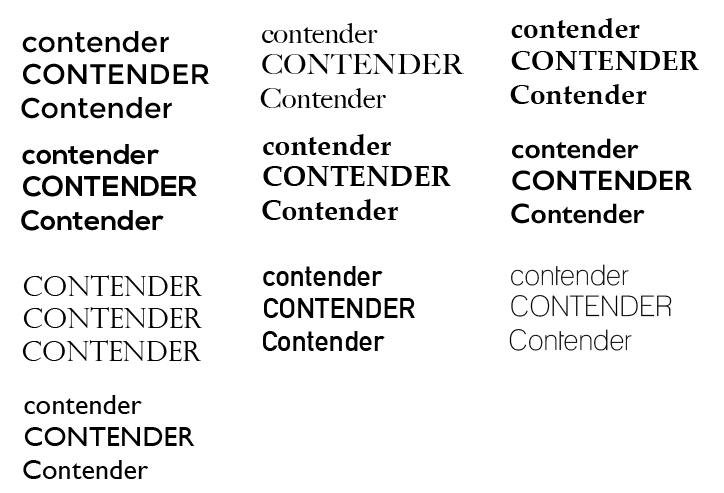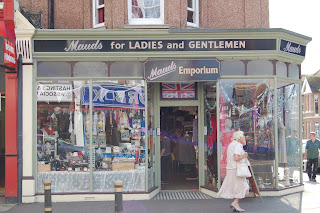 |
| Intern Magazine |
- Internship in Milan at DOMUS, an architecture and design magazine for 2 months
- Not formally trained in Magazine Design, started work at BOAT travel magazine for 7 months as an intern
- BOAT magazine has each issue revolving around a different city
- As an intern, didn't feel like any place would give him a chance. Wanted to make a magazine that was by and for the people
- Issue 0 of Intern Magazine was used for show for the Kickstarter fund as it gave people something to refer to
- Issue 1 was funded by Kickstarter- Perfect bound, GF Smith paper with copper foiling
- A mixture of illustration, photography and writers is used to make up Intern Magazine
- Approach to adverts- Sponsorship are designed in-house with a uniformed look which works well with the magazines aesthetic.
We were asked to get into groups, with my group consisting of Emily, Anna, Jane and myself. The brief for the day was split up into two parts:
Part 1- Produce a concept for a new independent magazine with a masthead and front cover for the first issue
Part 2- Produce a crowd-funding campaign outline, showing how you would connect to your audience
Part 1:
We began to have a look at some independent magazines that already exist to see what area of the market we could put ourselves in.
 |
| Intern Issue 1 & 2 Intern 'Intern Issue 1 & 2' [Internet] Available from http://intern-mag.com (Accessed 25th November 2014) |
We began by looking at what Intern magazine was and we liked the strong branding the the use of photography to give the magazine a professional and dedicated visual identity.
 |
| Boat Magazine Issues Boat Magazine [internet] Available from http://www.boat-mag.com/issues/ (Accessed 25th November 2015) |
What drew us to Boat magazine was the culture and the sense of adventure within the publication. If we worked for a magazine, we would like the chance to go travelling with it so this gave us a sense of global perspective for our own magazine concept.
 |
Colors Magazine Cover Issues
Colors Magazine [Internet] Available from http://www.colorsmagazine.com/magazines (Accessed 25th November 2015)
|
As a group, we liked the illustrative manner that Colors presented itself. We also liked the fact that it continued to change itself and wasn't confined to being a specific topic or area of interest.
To start with, our group did some brainstorming in regards to what areas or ideas we had for a possible concept for the magazine.
 |
| Intern Magazine Brainstorm |
Speaking to Alec, he mentioned that the random word concept was too similar to Colors magazine where they take a topic and run with it throughout the whole magazine. He liked the idea of obscure sports because it was fun and unexpected so we decided to run with that so that we wouldn't waste time trying to pick between the two concepts.
 |
| List of Obscure Sports |
Anna and Emily researched into different obscure sports and made a list of them. As a group, we settled on picking 4 sports to feature in the first issue, with Ultimate Frisbee, Roller Derby, Belly Flopping and Dog Surfboarding providing a mixture of serious and slightly humorous sports.
We knew that it would be difficult to target a new audience for obscure sports so we decided to target people who already have an interest in obscure sports who are looking for a hobby and want to take a sport up or if they already play some and want to stay up to date on news. We felt the readership would be both male and female between the ages of 20-40 with the tone of voice being interested, knowledgable and sincere but with a sense of humour as the target audience will take these sports seriously.
In regards to a name for the magazine, Jane and myself brainstormed names for the magazine, looking at words that would be similar to obscure, with our favourites being Peculiar, Kooky and Off-beat. We decided on Off-beat due to the fact that the sports were off-beat and the cultures that they would be from would be off-beat so we would be working off the beaten track.
Speaking to Alec, he liked that we had a very focused, nichè audience and a clear idea for the content of the magazine. However, he mentioned that the name made him think of music rather than sports and suggested that we changed the name so it was more specific.
In regards to the name, I went onto looking at more possible names that we could call the magazine, with possibilities being Adversary, Team, Result, Athlete but the favourite one I came up with was Contender as it was specific to competition which sport is all about, describing both sides of opposing team members as well as individual people who play for fun.
From this, I went onto trying to produce a masthead for the name of the magazine.
 |
| Chosen Font and Masthead Development |
 |
| Emily's Mastheads |
Focusing on the 4 sports that we had, Jane found a great image of someone mid-belly flop and we decided to see if we could use it for the front cover.
 |
| Development of Front Covers |
I experimented with masthead and image size, font colour and empty space to try and produce a front cover, however, the trouble with the photo that we were using was the amount of pixelation that was making the image difficult to visually see so I decided to find an image with a larger size so it would be less pixelated when used. We decided to run with this new image as a group.
 |
| Chosen Front Cover |
In the end, we decided to go with Emily's front cover for the magazine, settling on a masthead in a white colour so as to be more legible against the full image background. It was important for the image to be full scale because then it would be immersive of the sport so it would get the audience to dive into the magazine and feel a part of the action.
Part 2
The next thing that Jane and myself did was focus on thinking of what we could do for a crowd-funding campaign.
 |
| Intern Magazine Kickstarter PageKickstarter 'Intern Magazine' [Internet] Available from https://www.kickstarter.com/projects/819444313/intern-magazine (Accessed 25th November 2014) |
Neither of us really knew what Kickstarter or crowd funded projects were so we decided to do a quick but of research to understand what it was. Kick-starter is a website which allows users to set up a donation page to encourage people to invest in an idea through the medium of video, with the aim of reaching a target amount by rewarding donors. By having a look on the Intern magazine page, we were able to see the type of rewards on offer and the video they had used.
 |
| Kickstarter Successfully Funded Projects Graph Kickstarter Successfully Funded Projects Graph [Internet] Available from http://mastersofmedia.hum.uva.nl/2012/10/05/kickstarting-the-crowdfunding-trends/ (Accessed 25th November 2014) |
Kickstarter and other crowd-funding projects have become very popular as it allows the person who is helping to fund it feel as though they are getting involved with the project itself. There are many area of interest that crowd-funding takes up, with the most popular being creative subjects, like music, publishing and art.
 |
| What Kickstarter Has Kickstarted Infographic 'What Kickstarter Has Kickstarted Infographic' [Internet] Available from http://www.kickstartyourjourney.com/23-significant-kickstarter-facts-figures-and-statistics-plus-7-infographics/ (Accessed 25th November 2014) |
What Kickstarter has created is a method to which independent people and companies can advertise themselves and allow the individual to reach a global scale audience for their product.
Taking what we had learnt fro the research, we began to think of ways that we would be able to apply these things to Contender.
 |
| Plan for Crowd-Funding Campaign |
It was important for us to be able to connect to our niche audience so we felt like the video content for Kickstarter would show the sports within the first issue being done, as again it would link to the ideas of the audience being immersed within the action. We would have us filming on location and behind the scenes of the production of the magazine, with some double spreads of the magazine for reference
To get people to pledge a certain amount of money, we needed to think of what we could do as incentives for people to pledge as much money as possible. The initial incentives were based around having either a digital, printed or both copies of the magazine. However, we started getting creative with the pledges, allowing for the audience to pick their own front cover based on the sport they liked or, if they were already involved in the sport, having themselves or their team featured and interviewed within the magazine. We felt that, to encourage audience participation, people could pledge to have a topic sport suggestion for the next issue and be mentioned within the article for that sport within the magazine. Lastly, the largest pledge reward would be to have a one-off lesson on one of the 4 chosen sports alongside us and get to review it for the magazine with us.
Based on the crowd-funding pledging reward concept of having 4 front covers that the pledger could choose from, Emily went onto making 3 new covers for the magazine so that this would be fulfilled.
Following from this, Jane, Anna and myself went onto presenting these covers to the rest of the year where we talked about the concept of the magazine and the crowd-funding concepts we had come up with.
To extend on the brief, I decided that I should come up with my own layout for the magazine that I would have showing on the Kickstarter campaign so as to encourage people to read the magazine. Plus, I would be able to work on my layout ability so this gives me a quick opportunity to have a quick exercise to work on this.
 |
| Development of Layout Suggestion |
From this, I went onto producing some design boards showcasing the work we did as a group for this brief.
With the inclusion of the mock ups, I made some submission boards for the module submission to demonstrate the journey of the brand and how we came to this conclusion.
I feel that the boards that I have produced shows a very condensed yet clear development of how the project progressed.
I felt that, as a group, we worked very well and managed to turn around the necessary work in the time given. I liked how we went for a more unconventional topic for the magazine which allowed us to have fun with it, adding more of a personality and character to the brief outcome. The actual workshop I fully enjoyed as it was a bit different and was just about right in regards to the workload amount. Alec was very helpful as he kept coming round the table and criting the work we had done which helped with the direction of the brief.











































































